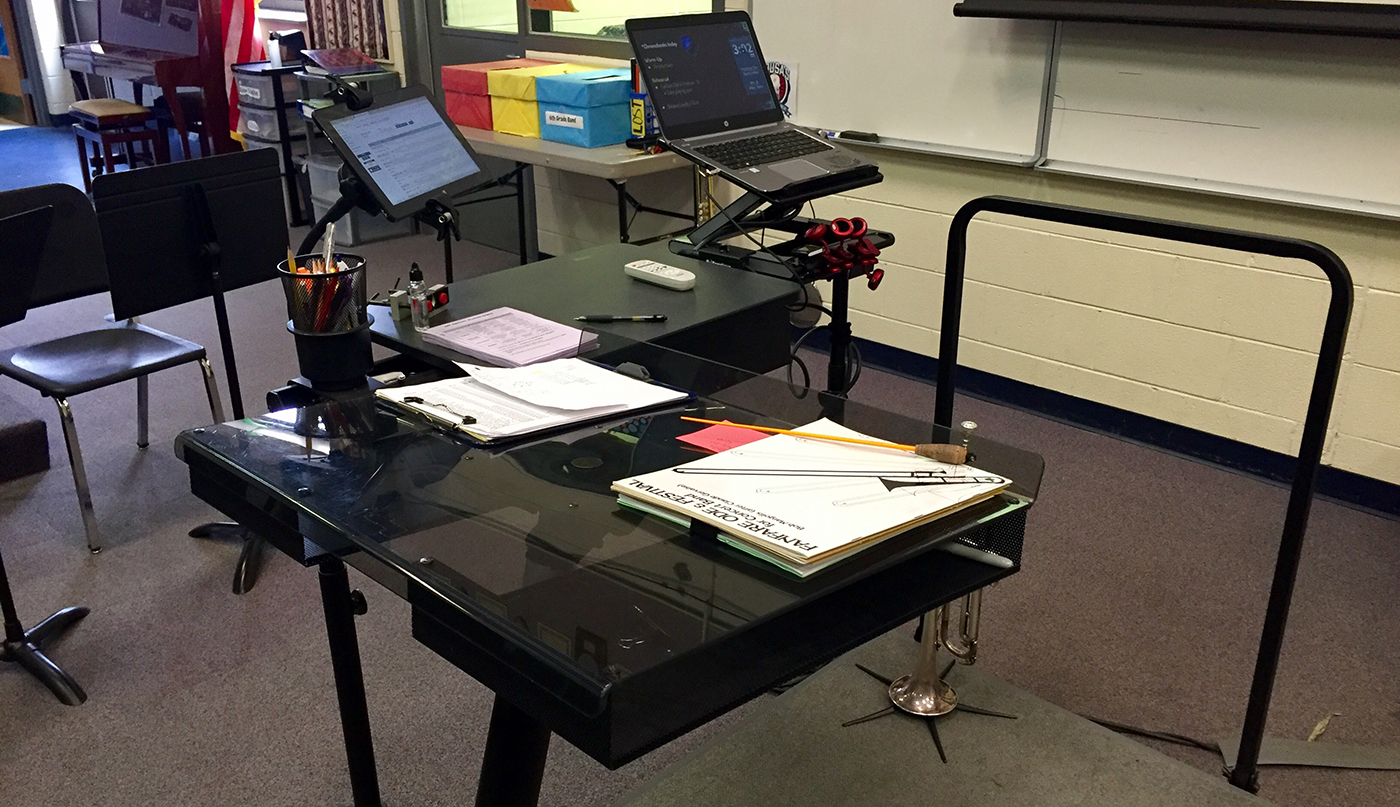
Whether you’re a seasoned veteran or a new director, it’s important to structure rehearsals that are both positive and productive. Rehearsal time is at a premium, especially if your ensembles do not rehearse every day. With a little planning and preparation, you can create a rehearsal environment that enables your ensembles to reach their goals. Here are seven strategies to help make every rehearsal more positive and productive.
Goals
Communicate the rehearsal outline and goals by using Google Slides and a projector or by simply writing the rehearsal plan on a whiteboard or chalkboard. When you have a plan, the students will be successful and more likely to meet the objectives.
The key is to identify a goal or objective and work towards completing it. For example:
- Play with 100% note and rhythmic accuracy
- Perform with good balance and blend
- Improve intonation in measures 1-36
- Focus on correct bowings
Sometimes the goal can be accomplished in one rehearsal, other times it may take the entire week. Throughout rehearsal, ask students what the goal is to ensure everyone understands and is working together.
Energy
Be positive and enthusiastic, but be yourself. An energetic teacher is inspiring and can motivate students to do their best. Recognize students who are leading by example:
- “Flutes, your articulations were excellent.”
- “Low brass, I appreciate everyone counting and making entrances on-time. Way to go!”
- “Violins, I appreciate your focus today!”
Recognizing your students’ positive contributions influences and motivates everyone to do their best.
Create a Teaching Station
Create a teaching station – as seen above – with everything you need at your fingertips. Stepping off the podium to retrieve something from your desk breaks the focus and momentum of rehearsal. If you are using any technology tools, make sure everything works before using them in rehearsal. A little planning and preparation will ensure that you have all needed materials at the podium. These can include:
-
- Attendance roster, seating chart
- Warm-up materials
- Scores, pencils, baton
- Post-it notes
- Instrument for modeling
- Technology tools: laptop/tablet, smartphone, metronome, tuner, document camera, recording device, etc…
Boost Engagement
Keep students engaged by rehearsing at a quick, efficient pace. When sections are not playing, ask those students to listen for specific elements like tone quality, balance, articulation, or dynamics. The purpose of this is two-fold. Students tend to raise their level of playing when their peers are actively listening. Second, listening with a purpose keeps students engaged and develops listening skills. Be sure to ask the students to give feedback on what they heard.
Positive Feedback
When giving feedback to your students, it is important that you are specific, but concise in your words. Avoid being overly wordy and using general descriptors like “good,” “better,” and “okay.” Richard Floyd, author of The Artistry of Teaching Music, suggests:
“Instead of saying, ‘don’t play so loud, I can’t hear the melody.’ Try, ‘play softer and be kind to your friends playing the melody.’”
Changing how you say the same request, adds a positive twist and shows you respect your students and their effort.
Show You Care
You might be a rehearsal master, but the students won’t care how much you know until they know how much you care. Here are some ways to demonstrate that you do care:
-
- Greet students at the door
- Learn all of your students’ names
- Use a kind voice
- When students talk, stop and listen
- Be encouraging
- Show interest in their activities outside of music
- Attend an extracurricular activity or sports game
Reflect
After rehearsal, take 5-10 minutes and reflect. Ask yourself three questions:
- What could I have done differently to improve our rehearsal?
- What was successful?
- Which area(s) do we need to focus on at the following rehearsal?
Running a positive, productive rehearsal takes practice. I suggest choosing one or two of these strategies to focus on rather than implementing all of them at once. Remember to reflect on your progress and improvement each day. As you gain confidence, your rehearsals will become more enjoyable, productive, and successful.
